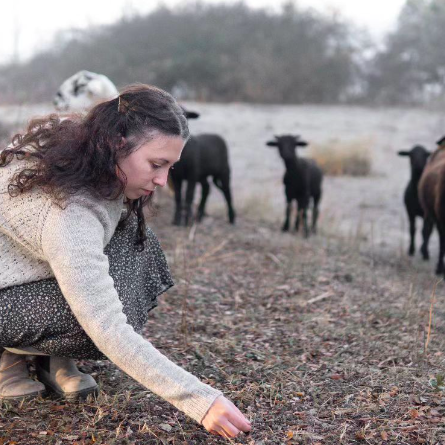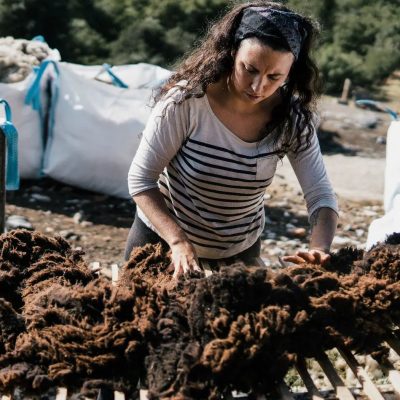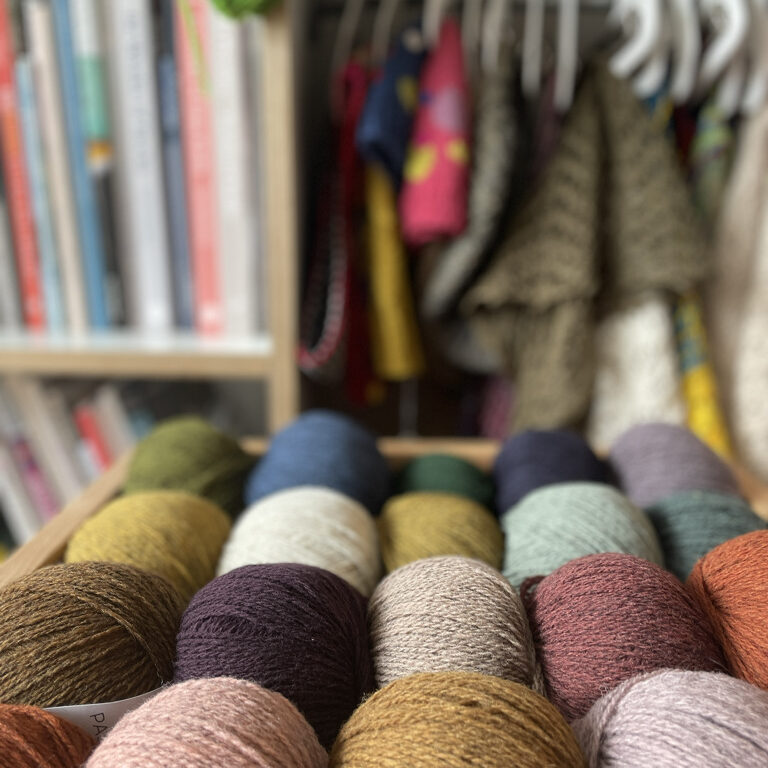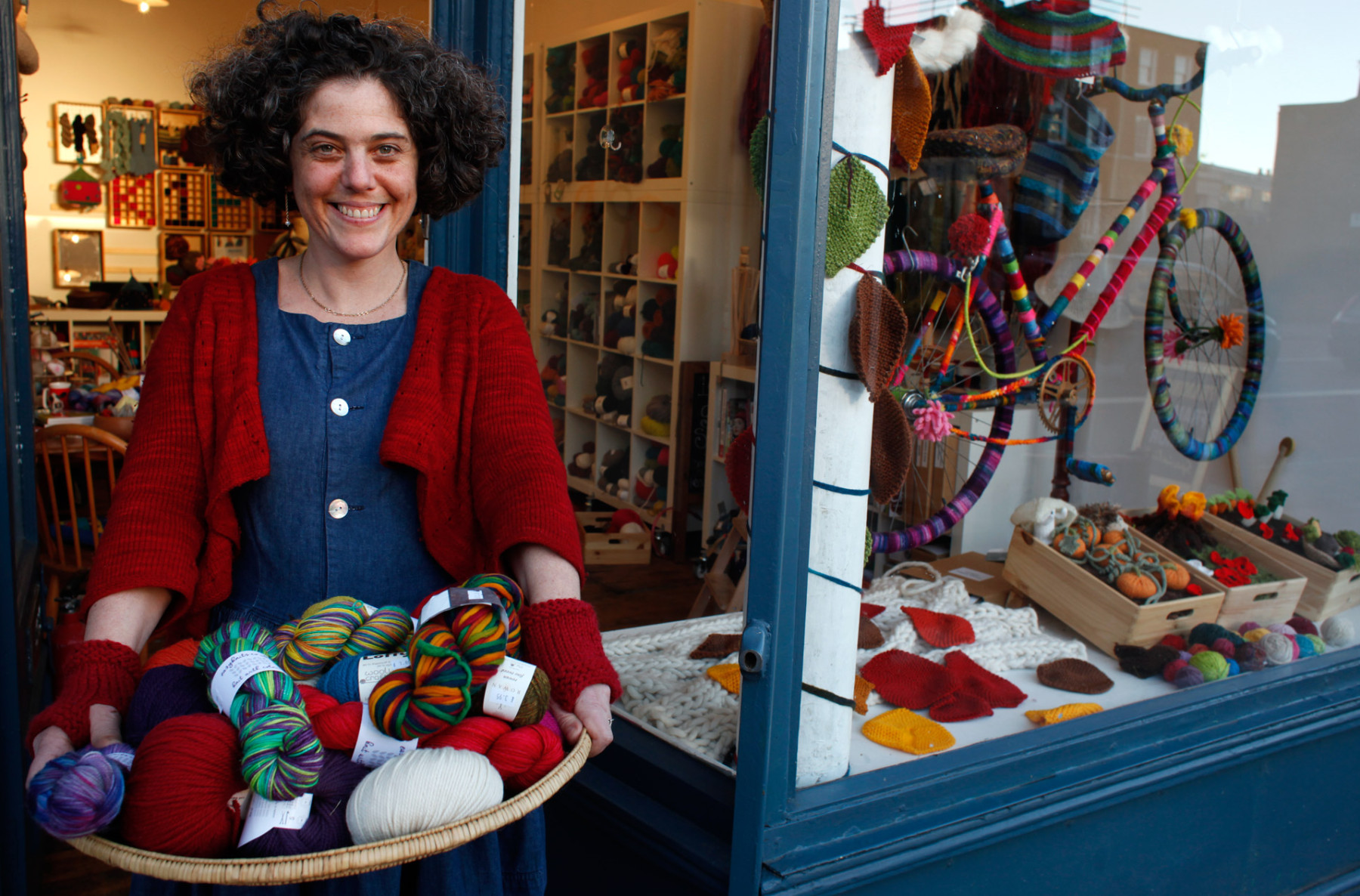“Now I have to find more wool. There are many flocks, but they don’t all have the right wool. Some are more like goats with their long hair.”
Elena Solier has sold out of her last batch of Xolla Wool and is uncompromising in selecting fleeces for the next spin.
She lives in Catalonia, making wool from the entrefina fleece of Ripollesa, Xiqueta and Aranesa breeds of sheep. Xolla (pronounced cho-y-a), meaning shearing in Catalan, is the name of her small wool-making company.

“I live near the farmers and the wool is carded, spun, plied and dyed 60km from here in the city where I was born. The scouring mill is 6 hours away by road and is the only part of the process which is outside of Catalonia. When it first needed to go for scouring, I rented a van and I took it there myself because I wanted to meet the people who would be scouring my wool.“
Elena’s wool-making story began during a period of intermittently working over the border in France, including a stint at Ardelaine in the Ardèche region. Ardelaine is the home of a celebrated spinning mill which was famously restored long before Elena was born in the 1970s by a handful of friends. Their’s was an idealistic project, not only about reviving the machinery of an ailing local wool business for farmers and producers, but also to create a fairer workplace and more just market for the products they made. It’s clear that the Ardelaine mill (which survives and thrives to this day) made a profound impression on Elena, and set a foundation for the business ethics, as well as the wool she wanted to create back home in Catalonia.
So she began by learning to spin her own wool by hand, using fleece collected from local farmers. This was part of wanting to understand every step of the process: cleaning, carding, spinning and finally natural dyeing.
“I really enjoyed working with natural dyes!” she says with a great big smile on her face.
Meanwhile her partner’s studies at the local Catalonian School of Shepherds gave her access to the expertise and fleeces of local breed sheep of nearby shepherds and sheperdesses.

Scaling up production meant a tranistion from home spinning to working with industrial spinning mills and this came with its own challenges..
“The first wool I had spun wasn’t exactly what I wanted. The yarn was spun too tight for my taste. This isn’t surprising as the spinning equipment at the mill was more accustomed to creating wool for weaving, where the wool needs a tight spin to stop it breaking. By the second spin, I was working with a different person at the mill who was really interested in what I was trying to do. This time the spin was great!“
The dyeing meanwhile, took place at a local dye studio already well versed in Oeko Tex cetification dyes. Under Elena’s careful direction, they created a pallette of colours with more than a nod to the shades she’d been creating previously with her plant dyeing practice.
The final result is a heathered 4ply yarn called Pastoreta. It comes with an airiness in the twist which you can’t fully appreciate until after blocking. The fibres swell, soften and bloom into the stitches after their first bath, creating a fabric which is as comfortable at a DK gauge of 22 stitches, as the more normal 26 or 27 of comparable 4plys. Not only does this radically cut the cost of your sweater – think how far the 200m will go if you’re using them in a DK project – it also creates a much lighter weight fabic which is wearable during our centrally heated winters and not-so-hot-afterall spring-summer days. As the dyeing takes place over the naturally heathered greyish colour of the Ripollesa wool, there is a tactile depth and character to every shade which is almost impossible to catch digitally.

I can’t help thinking, we’ve been here before: A firecely independent European wool maker who is carefully sourcing fleece from nearby flocks, working closely with very local mills and dye houses, prioritising environmental sustainability, animal welfare and working conditions over mass production and profit margins, producing unusually characterful knitting yarn.
I point this out to Elena – how the shelves of the shop are now almost completely colonised by the wool of small mostly southern European producers, each with incredibly distinctive yarn, but with a common thread of work ethics and production values, running through all of them. “It feels like you’re part of movement”, I suggest.
“Oh Yes!” She says. “This is what we call the Activistas de la Lana!“
For Elena’s work in creating Xolla Wool locates her squarely alongside the yarn producers all of you have been so enthusiastically championing with your knitting, and we have been so thrilled to have in the shop: Dlana, Wool Dreamers, Rosa Pomar, Abenaia, Rauwerk, Dererum Natura. Elena claims that this makes what we do – our knitting – into a ‘manifesto for empowerment’. By cultivating a taste for wool which is made in this way, we are playing a role in keeping the circle of short-haul production that supports the rural environment through traditional methods of sheep rearing and shepherding, going around and around and on and on.

